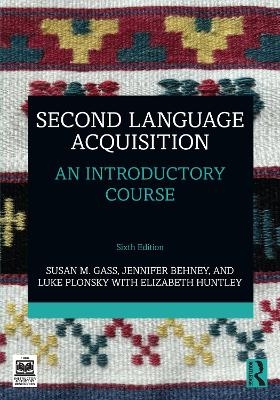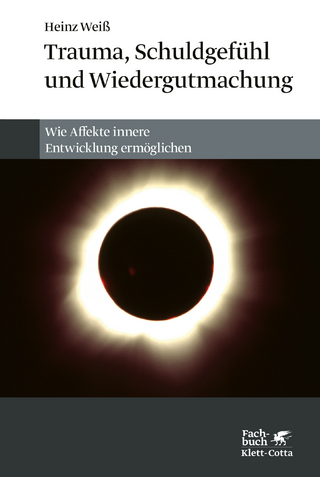
Second Language Acquisition
Routledge (Verlag)
978-1-032-79238-5 (ISBN)
- Noch nicht erschienen (ca. März 2025)
- Versandkostenfrei innerhalb Deutschlands
- Auch auf Rechnung
- Verfügbarkeit in der Filiale vor Ort prüfen
- Artikel merken
This substantially revised and updated edition has been edited into ten chapters, with a focus on the most frequently taught core themes and increased accessibility. A new introductory chapter provides a concise overview of the history of the field. Omitted chapters are available online where supplementation is desired. The text continues to provide a rich range of pedagogical tools that encourage students to reflect upon the experiences of second language learners. As with previous editions, discussion questions and problems are peppered throughout each chapter to help students apply their knowledge, and a glossary defines and reinforces must-know terminology. Additional questions and problems appear on the online companion website.
This seminal text is ideal core reading for SLA courses in second language studies, applied linguistics, linguistics, TESOL, and/or language education programs. This textbook is supported with a Companion Website containing instructor and student resources including PowerPoint slides, exercises, flashcards, audio and video links: https://routledgetextbooks.com/textbooks/9781138743427/
Susan Gass is University Distinguished Professor Emerita at Michigan State University where she served as Director of the English Language Center, Co-Director of the Center for Language Education and Research, and the Center for Language Teaching Advancement. She has published more than 30 books and more than 150 articles in the field of second language acquisition, with works translated into Russian, Korean, and Chinese. She served as Editor of Studies in Second Language Acquisition and is on numerous editorial boards of applied linguistics journals. She is an honorary member of Southeast University of Nanjing, China. Susan is the winner of many local, national, and international awards and has served as the president of the American Association for Applied Linguistics (AAAL) and of the International Association of Applied Linguistics (AILA). She has lectured in six of the seven continents, Antarctica being the exception. Jennifer Behney is Associate Professor of Teaching English as a Second Language (TESL) in the English Department at Kent State University where she teaches undergraduate and graduate courses. Her work has appeared in Language Learning, Foreign Language Annals, Studies in Second Language Acquisition, and various book chapters. She was co-author of Interaction, a Cambridge Series Elements of Second Language Acquisition, and co-editor of a volume on salience in SLA. She is a recipient of the Ed Allen Award for Outstanding College World Language Instructor. Luke Plonsky is Professor of Applied Linguistics at Northern Arizona University, where he teaches courses in second language acquisition and research methods. His work in these and other areas has resulted in over 100 articles, book chapters, and books. Luke is Editor of Studies in Second Language Acquisition and Managing Editor of Foreign Language Annals. In addition to a current appointment as Honorary Professor at the International Education Institute at University of St. Andrews (Scotland), Luke has held faculty appointments at Georgetown University and University College London, and was a Fulbright Scholar in Spain in 2021. Luke has also lectured in China, Japan, The Netherlands, Poland, Spain, and Puerto Rico. Elizabeth Huntley is an instructor of Arabic and Linguistics at the University of Colorado Denver, as well as Managing Editor of the journal Studies in Second Language Acquisition. She holds a doctorate degree in Second Language Studies from Michigan State University. As a teacher-researcher, Huntley applies methodologically rigorous techniques to answer questions of both theoretical and practical importance. Huntley has taught Arabic as a Second Language in both high school and university programs, as well as worked in study abroad, since 2006. She has received research funding from the Qatar Foundation and the National Council of Less Commonly Taught Languages. She has co-authored two Arabic world language textbooks published by Routledge: ‘Arabiyyat al-Naas fii maSr, and ‘Arabiyyat al-Naas II.
Preface
Chapter 1
1.1 The What and Why of SLA
1.2 Definitions
1.3 The Nature of Language
1.3.1 Semantics
1.3.2 Pragmatics
1.3.3 Syntax
1.3.4 Morphology and the Lexicon
1.3.5 Sound Systems
1.4 The Nature of L2 Knowledge
1.5 Conclusion
Points to Remember
Chapter 2
2.1 Introduction
2.2 Behaviorism
2.2.1 Linguistic Background
2.2.2 Psychological Background
2.3 Contrastive Analysis
2.4 Error Analysis
2.5 Child Language Acquisition
2.5.1 Child first Language Acquisition
2.5.2 Child L2 Acquisition
2.6 A Change in Perspective
2.7 Morpheme Order Studies
2.7.1 Child L2 Morpheme Order Studies
2.7.2 Adult L2 Morpheme Order Studies
2.8 The Monitor Model
2.8.1 The Acquisition-Learning Model
2.8.2 The Natural Order Hypothesis
2.8.3 The Monitor Hypothesis
2.8.4 The Input Hypothesis
2.8.5 The Affective Filter Hypothesis
2.8.6 Criticisms of the Monitor Model
2.9 Looking Again at the Role of the L1
2.9.1 Avoidance
2.9.2 Differential Learning Rates
2.9.3 Differential Learner Paths
2.9.4 Overproduction
2.9.5 Predictability/Selectivity
2.9.6 Transfer and Learning of Multiple Languages
2.9.7 L1 Influences in L2 Processing
2.10 Conclusion
Points to Remember
Chapter 3
3.1 Introduction
3.2 Universal Grammar
3.2.1 UG and Child Language Acquisition
3.2.2 UG and SLA
3.2.3 Access or Not
3.2.3.1 Fundamental Difference Hypothesis
3.2.3.2 Access to UG Hypotheses
3.2.4 The Minimalist Program
3.2.4.1 Features are Not Accessible
3.2.4.2 Features are Accessible
3.2.4.3 The Interface Hypothesis
3.2.4.4 Is There Access or Not? Who Is Right?
3.3 Typological Universals
3.4 Phonology
3.5 Functional Approaches
3.5.1 Concept-Oriented Approach
3.5.2 Tense-Aspect
3.5.2.1 Prototypes
3.5.2.2 Futurity
3.6 The Discourse Hypothesis
3.7 Conclusion
Points to Remember
Chapter 4
4.1 Introduction: The Significance of the Lexicon
4.2 Lexical Knowledge: What does it Mean to Know a Word?
4.2.1 Production and Reception
4.2.2 Knowledge and Control
4.2.3 Breadth and depth
4.2.4 Word Associations and Networks
4.2.5 Word Formation
4.2.6 Formulaic Language, Collocations, and Chunking
4.2.6.1 Use of Multiword Units
4.2.6.2 Learning of Multiword Units
4.2.6.3 Processing of Multiword Units
4.3 Influences on L2 Vocabulary and Development
4.3.1 The Role of the L1
4.3.2 Incidental Vocabulary Learning
4.3.2.1 Reading
4.3.2.2 Listening
4.3.2.3 Reading While Listening
4.3.3 What Helps Learning?
4.3.3.1 Frequency
4.3.3.2 Strategies
4.3.3.3 Activity Type
4.3.3.4 Other Factors
4.3.4 Depth of Processing and the Involvement Load Hypothesis
4.3.5 Incremental Vocabulary Learning
4.4 Using Lexical Skills
4.4.1 Production
4.4.2 Perception
4.5 Conclusion
Points to Remember
Chapter 5
5.1 Introduction
5.2 Models of Language Production
5.3 Processability Theory
5.4 Processing of Input
5.4.1 Input Processing
5.4.2 Processing Determinism
5.4.3 Autonomous Induction Theory
5.4.4 Shallow Structure Hypothesis
5.5 Emergentist models
5.5.1 Competition Model
5.5.2 Frequency-Based Accounts
5.6 Complex Dynamic Systems
5.7 Skill Acquisition Theory
5.8 Information Processing
5.8.1 Automaticity
5.8.2 Restructuring
5.8.3 U-Shaped Learning
5.8.4 Attention
5.8.5 Working Memory
5.8.6 Salience
5.8.7 Priming
5.9 Knowledge types
5.9.1 Acquisition/Learning
5.9.2 Declarative/Procedural
5.9.3 Implicit/Explicit
5.9.4 Representation/Control
5.9.5 Interface of Knowledge Types
5.10 Conclusion
Points to Remember
Chapter 6
6.1 Introduction
6.2 Sociocultural Approaches
6.2.1 Mediation, Regulation, and Internalization
6.2.2 Zone of Proximal Development
6.2.3 Learning in a Sociocultural Framework
6.2.4 Gesture and SLA
6.3 Variationist Approaches
6.3.1 Type I Variation: From Free to Systematic
6.3.2 Type II Variation: Sociolinguistic Variation
6.3.3 Contextual Sources of Variation: Interlocuter, Task Type, and Topic
6.4 Conversation Analysis
6.5 L2 Pragmatics
6.6. Conclusion
Points to Remember
Chapter 7
7.1 Introduction
7.2 Input
7.3 Comprehension
7.4 Interaction
7.5 Output
7.5.1 Receiving Feedback
7.5.2 Hypothesis Testing
7.5.3 Automaticity
7.5.4 Meaning-Based to Grammar-Based Processing
7.6 Feedback
7.6.1 Negotiation
7.6.2 Corrective Feedback
7.6.2.1 Recasts
7.6.2.2 Elicitation
7.6.2.3 Metalinguistic Feedback
7.6.3 Language-Related Episodes
7.7 Input and Interaction in Language Learning
7.7.1 The Function of Input and Interaction
7.7.2 Effectiveness of Feedback
7.7.2.1 Attention and Noticing
7.7.2.2 Contrast Theory
7.7.2.3 Metalinguistic Awareness
7.8 Who Benefits from Interaction: When and Why?
7.8.1 Working Memory
7..2 Inhibition
7.9 Conclusion
Points to Remember
Chapter 8
8.1 Introduction
8.2 Classroom-Based Instruction
8.2.1 Classroom Language
8.2.2 Teachability/Learnability
8.2.3 Focus on Form and Task-Based Language Teaching
8.2.3.1 Timing
8.2.3.2 Task Design
8.3 Complexity, Accuracy, Fluency, and Planning
8.4 Processing Instruction
8.5 Effectiveness of Instruction
8.6 SLA and Classroom Practices
8.7 Additional Contexts
8.7.1 Study Abroad
8.7.2 Technology-Enhanced Language Learning
8.8 Conclusion
Points to Remember
Chapter 9
9.1 Introduction
9.2 The Influence of Psychology in SLA
9.3 Methodological Considerations
9.4 Age Differences
9.5 Aptitude
9.6 Motivation
9.6.1 Motivation as a Function of Time and Success
9.6.2 Changes over Time
9.6.3 The L2 Motivational Self System
9.7 Affect
9.7.1 Anxiety
9.7.2 Other Emotional Variables
9.8 Personality
9.8.1 Extroversion and Introversion
9.8.2 Grit
9.9 Learning Strategies
9.10 Conclusion
Points to Remember
Chapter 10
10.1 Introduction
10.2 Bilingualism
10.3 Third Language Acquisition/Multilingualism
10.3.1 Typological Primacy Model and Transfer
10.3.2 Property-By-Property Transfer
10.3.3 The Ln Lexicon
10.3.4 Other Sources of Transfer in Ln Acquisition
10.4 Heritage Language Acquisition
10.5 SLA by the Deaf/Hard of Hearing
10.6 Conclusion
Points to Remember
Glossary
References
Author Index
Subject Index
| Erscheint lt. Verlag | 5.3.2025 |
|---|---|
| Zusatzinfo | 22 Tables, black and white; 15 Line drawings, black and white; 6 Halftones, black and white; 21 Illustrations, black and white |
| Verlagsort | London |
| Sprache | englisch |
| Maße | 178 x 254 mm |
| Themenwelt | Geisteswissenschaften ► Psychologie ► Allgemeine Psychologie |
| Geisteswissenschaften ► Psychologie ► Entwicklungspsychologie | |
| Geisteswissenschaften ► Sprach- / Literaturwissenschaft ► Sprachwissenschaft | |
| Sozialwissenschaften ► Pädagogik | |
| ISBN-10 | 1-032-79238-8 / 1032792388 |
| ISBN-13 | 978-1-032-79238-5 / 9781032792385 |
| Zustand | Neuware |
| Haben Sie eine Frage zum Produkt? |
aus dem Bereich


